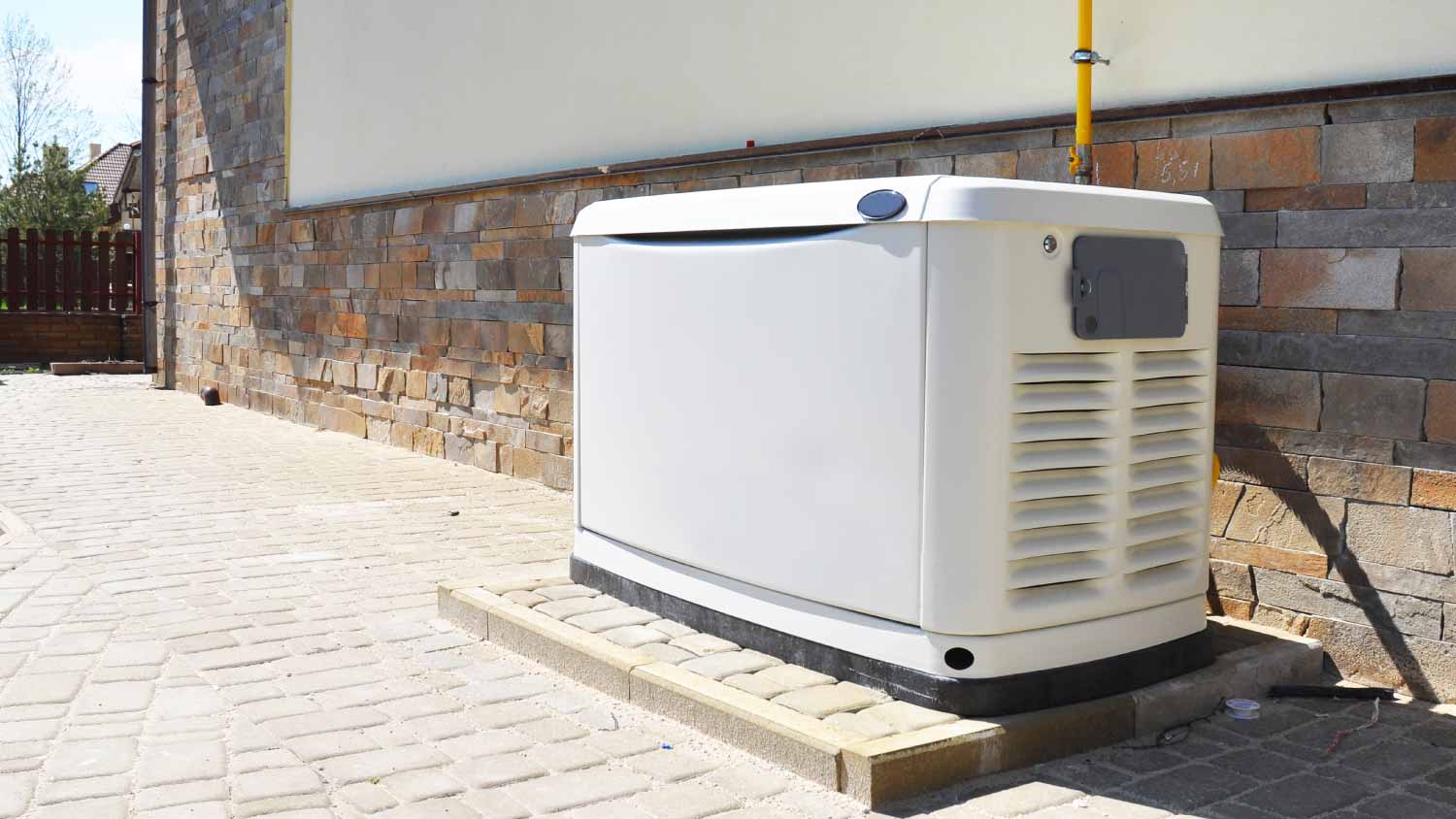
The cost to install a generator transfer switch depends on several factors. Our guide will help you understand all of the costs.
The average cost to run a standby generator is $3 per hour, but it can range between $2 per hour and $5 per hour, depending on the generator’s size and fuel type.


The average cost to run a standby generator is $3 per hour, though prices can fall between $1 per hour and $10 per hour. If the power goes out, a standby generator can keep your home running, but it's important to factor in how much you'll spend to run the generator, especially for extended power outages. Let’s review the costs associated with running a standby generator.

These are the main factors that will play into the cost to run a standby generator.
The type of generator has a key impact on the cost to run it. Natural and propane gas are the least expensive, while diesel will cost the most. Here’s how the costs break down on an hourly to daily basis.
| Generator Type | Cost to Run per Hour | Cost to Run per Day |
|---|---|---|
| Gasoline | $2–$5 | $60–$120 |
| Diesel | $6–$10 | $140–$240 |
| Natural Gas | $1–$5 | $25–$120 |
| Propane Gas | $1–$5 | $25–$120 |
The size of the whole-house generator plays a significant role in the cost to run it, as larger wattage capacities require more fuel. Below are the average expenses based on the size of the generator.
| Generator Size in Kilowatts | Average Cost to Run per Day |
|---|---|
| 7.5–9 | $10–$130 |
| 10–15 | $20–$210 |
| 16–22 | $30–$220 |
| 23–36 | $50–$300 |
Since fuel expenses vary across the country, location plays a significant role in how much it costs to run a standby generator. Areas with lower costs of living will see lower generator fueling and maintenance costs.

Aside from the covering fuel costs for the function of the standby generator, these are a few other expenses to budget for.
The cost of maintaining a whole-house generator averages between $150 and $300 per year. While it’s not a small expense, especially in the grand scheme of your generator’s lifespan, keeping up with maintenance is crucial for preventing costly breakdowns and ensuring it functions properly when you need it the most.
If any part of your generator breaks down, repair costs can vary anywhere from $50 to $2,000, depending on the part that needs replacing. A simple carburetor swap can cost as low as $60, while a major engine replacement can cost upwards of $2,000.
A standby generator is an ongoing investment, but there are a few different ways to keep costs down. Here are some of the best ways to save when running a standby generator:
Always have a generator installed by a certified local generator installer to ensure it’s set up correctly and works as efficiently as possible.
Determine the right generator size beforehand by calculating your home's power needs with an electrician.
Clean air filters, fuel filters, and spark plugs regularly to keep the generator running efficiently.
Follow the manufacturer’s maintenance schedule to prevent breakdowns and costly repairs.
Compare fuel options and switch to a more cost-effective source (like natural gas) if available.
Buy fuel in bulk to take advantage of lower rates and long-term savings.
Limit power use during outages by running only essential appliances.
Stagger the use of high-energy devices instead of running them all at once.
Get multiple installation quotes to find the best deals on labor and equipment.
If you’re concerned about the cost to run a standby generator, the good news is that you don’t need to invest in professional labor to start your unit. Many standby generators feature an automatic transfer switch, which will automatically transfer power from the main breaker to the generator in the event of an outage. If you don’t already have one, the cost to install an automatic generator transfer switch is between $1,000 and $2,500. Otherwise, manual transfer switches are simple to use, requiring only a flip of a switch to activate them.
As for repairs and yearly maintenance visits, hiring a professional generator installer is essential. Since whole-house generators are hooked up to your home’s electrical system, as well as your natural gas supply if that’s the fuel source, they’re extremely dangerous for anyone other than a pro to work on. By hiring a pro, you can ensure your generator stays ready to go in the event of an emergency.
From average costs to expert advice, get all the answers you need to get your job done.

The cost to install a generator transfer switch depends on several factors. Our guide will help you understand all of the costs.

Keeping on top of generator maintenance and repairs gives you extra peace of mind as a homeowner. Find out how much regular generator maintenance costs.

The average cost of a whole-house generator falls between $5,000 and $25,000. Keep reading to learn how much you can expect to spend.

Whole house generator sizing can be tricky to figure out if you don’t know a few key factors. Our guide can help you determine what size works best for your needs.

Installing a portable generator can power key appliances during outages. Learn about the best backup generator questions to discuss with a pro.

Generators are a home essential when a power outage strikes. Compare home standby generators vs backup battery systems to find the best one for you.